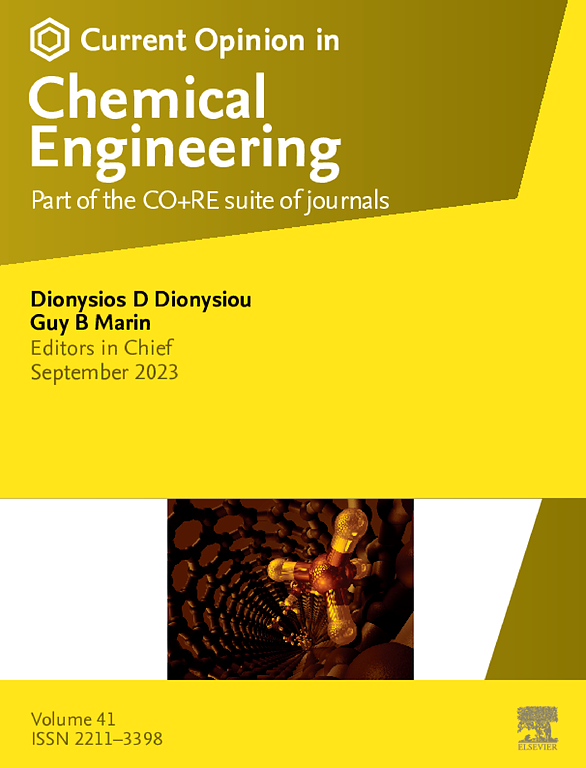Recent progress on S-scheme heterojunction strategy enabling polymer carbon nitrides C3N4 and C3N5 enhanced photocatalysis in energy conversion and environmental remediation
IF 8
2区 工程技术
Q1 BIOTECHNOLOGY & APPLIED MICROBIOLOGY
引用次数: 0
Abstract
Polymer carbon nitrides, such as C3N4 and C3N5, have considerable promise in photocatalysis because of their unusual thermostability, nontoxicity, and high solar energy usage efficiency. The S-scheme charge transfer mechanism can strengthen the whole photoactivity of a heterojunction by facilitating effective charge separation and maximizing redox capabilities. We outline the evolution from classic C3N4 to current C3N5, as well as the advanced S-scheme heterojunction technique for further photocatalysis advancement in energy conversion and environmental remediation. Furthermore, an outlook on future challenges and prospects for C3N4- and C3N5-based S-scheme heterojunction photocatalysts is presented.
使聚合物碳氮化物 C3N4 和 C3N5 在能量转换和环境修复中实现增强型光催化的 S 型异质结战略的最新进展
聚合物碳氮化物(如 C3N4 和 C3N5)具有非同寻常的热稳定性、无毒性和较高的太阳能利用效率,因此在光催化领域大有可为。S 型电荷转移机制可促进有效的电荷分离并最大限度地提高氧化还原能力,从而增强异质结的整体光活性。我们概述了从经典的 C3N4 到目前的 C3N5 的演变过程,以及先进的 S-scheme异质结技术,以进一步推动光催化技术在能源转换和环境修复领域的应用。此外,我们还对基于 C3N4 和 C3N5 的 S 型异质结光催化剂的未来挑战和前景进行了展望。
本文章由计算机程序翻译,如有差异,请以英文原文为准。
求助全文
约1分钟内获得全文
求助全文
来源期刊

Current Opinion in Chemical Engineering
BIOTECHNOLOGY & APPLIED MICROBIOLOGYENGINE-ENGINEERING, CHEMICAL
CiteScore
12.80
自引率
3.00%
发文量
114
期刊介绍:
Current Opinion in Chemical Engineering is devoted to bringing forth short and focused review articles written by experts on current advances in different areas of chemical engineering. Only invited review articles will be published.
The goals of each review article in Current Opinion in Chemical Engineering are:
1. To acquaint the reader/researcher with the most important recent papers in the given topic.
2. To provide the reader with the views/opinions of the expert in each topic.
The reviews are short (about 2500 words or 5-10 printed pages with figures) and serve as an invaluable source of information for researchers, teachers, professionals and students. The reviews also aim to stimulate exchange of ideas among experts.
Themed sections:
Each review will focus on particular aspects of one of the following themed sections of chemical engineering:
1. Nanotechnology
2. Energy and environmental engineering
3. Biotechnology and bioprocess engineering
4. Biological engineering (covering tissue engineering, regenerative medicine, drug delivery)
5. Separation engineering (covering membrane technologies, adsorbents, desalination, distillation etc.)
6. Materials engineering (covering biomaterials, inorganic especially ceramic materials, nanostructured materials).
7. Process systems engineering
8. Reaction engineering and catalysis.
 求助内容:
求助内容: 应助结果提醒方式:
应助结果提醒方式:


